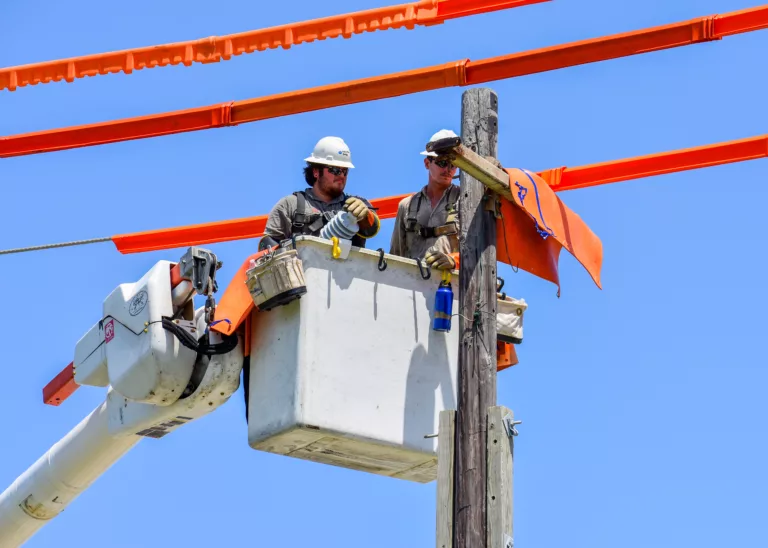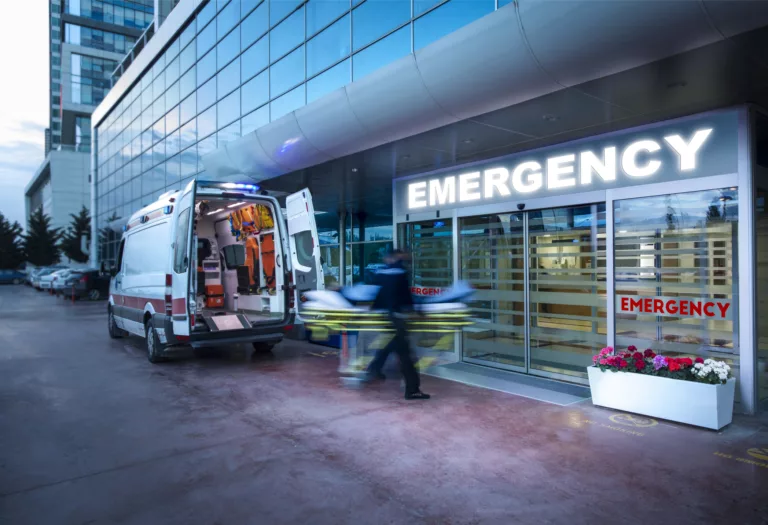
Article Archive by Year

Without transportation and communications, emergency response can move at an uncomfortably slow pace, enough so that life, property, and the environment may be unnecessarily compromised. The integrated transportation network must be protected from threats and other risks.

Resilience Versus Emergency Management
January 10, 2024
Conferences are full of important and interesting sessions, but attendees do not always take away actionable knowledge or have long-term retention of the information. This article summarizes a crowd-sourced conversation with panelists, attendees, resilience experts, and Chat GPT.

Energy Sector Perspectives
January 10, 2024
From the alarm clock that wakes people in the morning, to the natural gas used to cook breakfast, to the refined petroleum products powering vehicles for daily commutes, the Energy Sector plays an integral role in daily life activities.

Publisher’s Message: 25 Years of Domestic Preparedness
November 13, 2023
As we celebrate the 25th anniversary, we honor the founding publisher, Marty Masiuk, and all the dedicated writers, advisors, and subscribers who contributed to and supported the publication over the years. Preparing for whatever the future holds requires remembering the past, setting new goals for the future, and evolving to

Emerging Technologies, Part 5 – Legal and Privacy Concerns
November 8, 2023
This is Part 5 of a five-part series on emerging technologies that can enhance the management of and response to future emergencies and disasters. This part focuses on the legal and privacy concerns with emerging technologies.

Looking Ahead at Increasingly Frequent Unpredictable Weather
November 8, 2023
Deadly blizzards and violent tornado outbreaks recently occurred in areas that do not typically experience these events. Preparedness and response technologies can help manage the onslaught of unique weather emergencies and severe climate conditions.

The Race to Interoperability
November 1, 2023
The Boston Marathon Bombing demonstrated the dedication, commitment, and strength of those who responded that day. The lessons learned from that event continue to strengthen community resilience as participants gather to focus on building interoperability within and between jurisdictions.

Emerging Technologies, Part 4 – Robotics and Automation
November 1, 2023
This is Part 4 of a five-part series on emerging technologies that can enhance the management of and response to future emergencies and disasters. This part focuses on robotics and automation for enhancing efficiency, safety, and effectiveness in crisis response and mitigation.

Technology: Can’t Live With It, Can’t Live Without It.
October 25, 2023
The October edition of the Domestic Preparedness Journal takes a deeper dive into some of these considerations within national preparedness, critical infrastructure, and emerging technologies.

Healthcare and Public Health Sector Perspectives
October 25, 2023
According to the U.S. Centers for Medicare and Medicaid Services, National Health Expenditures (NHE) accounted for $4.3 trillion, or 18.3% of the U.S. gross domestic product. Find out how the Healthcare and Public Health Sector’s interdependencies can affect any community.
Multimodal Transportation Perspectives
January 17, 2024
Without transportation and communications, emergency response can move at an uncomfortably slow pace, enough so that life, property, and the environment may be unnecessarily compromised. The integrated transportation network must be protected from threats and other risks.
Resilience Versus Emergency Management
January 10, 2024
Conferences are full of important and interesting sessions, but attendees do not always take away actionable knowledge or have long-term retention of the information. This article summarizes a crowd-sourced conversation with panelists, attendees, resilience experts, and Chat GPT.
Energy Sector Perspectives
January 10, 2024
From the alarm clock that wakes people in the morning, to the natural gas used to cook breakfast, to the refined petroleum products powering vehicles for daily commutes, the Energy Sector plays an integral role in daily life activities.
Publisher’s Message: 25 Years of Domestic Preparedness
November 13, 2023
As we celebrate the 25th anniversary, we honor the founding publisher, Marty Masiuk, and all the dedicated writers, advisors, and subscribers who contributed to and supported the publication over the years. Preparing for whatever the future holds requires remembering the past, setting new goals for the future, and evolving to
Emerging Technologies, Part 5 – Legal and Privacy Concerns
November 8, 2023
This is Part 5 of a five-part series on emerging technologies that can enhance the management of and response to future emergencies and disasters. This part focuses on the legal and privacy concerns with emerging technologies.
Looking Ahead at Increasingly Frequent Unpredictable Weather
November 8, 2023
Deadly blizzards and violent tornado outbreaks recently occurred in areas that do not typically experience these events. Preparedness and response technologies can help manage the onslaught of unique weather emergencies and severe climate conditions.
The Race to Interoperability
November 1, 2023
The Boston Marathon Bombing demonstrated the dedication, commitment, and strength of those who responded that day. The lessons learned from that event continue to strengthen community resilience as participants gather to focus on building interoperability within and between jurisdictions.
Emerging Technologies, Part 4 – Robotics and Automation
November 1, 2023
This is Part 4 of a five-part series on emerging technologies that can enhance the management of and response to future emergencies and disasters. This part focuses on robotics and automation for enhancing efficiency, safety, and effectiveness in crisis response and mitigation.
Technology: Can’t Live With It, Can’t Live Without It.
October 25, 2023
The October edition of the Domestic Preparedness Journal takes a deeper dive into some of these considerations within national preparedness, critical infrastructure, and emerging technologies.
Healthcare and Public Health Sector Perspectives
October 25, 2023
According to the U.S. Centers for Medicare and Medicaid Services, National Health Expenditures (NHE) accounted for $4.3 trillion, or 18.3% of the U.S. gross domestic product. Find out how the Healthcare and Public Health Sector’s interdependencies can affect any community.
Follow Us
Get Instant Access
Subscribe today to Domestic Preparedness and get real-world insights for safer communities.
ARchives
Article Out Loud – FINAL REPORT: Preparedness Goals Associated with the Nuclear Threat
October 4, 2023
In 2011 and 2012, Domestic Preparedness conducted a nationwide survey followed by an executive briefing to discuss preparedness gaps and goals associated with a nuclear threat. Some gaps still exist.
Article Out Loud – COVID-19 – Emergency Plans and Readiness Exercises
October 4, 2023
During the COVID-19 pandemic, plans’ failures had little to do with the genomic sequence of the virus and more about what these plans were not: familiar, equitable and inclusive, interconnected and scalable, clear and actionable, and resilient.
Article Out Loud – Reducing Workplace Violence in Healthcare Facilities
September 26, 2023
Violence in healthcare facilities significantly challenges patients, providers, support staff, visitors, and first responders. However, healthcare-specific information and tools can help protect staff, patients, and others in these facilities.
Article Out Loud – Planning for a Cross-Country Special Event
September 26, 2023
A solar eclipse is a unique form of special event that does not always fall under emergency planning protocols, but it should. This article urges preparedness professionals to collaborate with eclipse planning committees to ensure the safety and security of all those involved.
Article Out Loud – Beyond Registries: Better Solutions for People With Disabilities
September 20, 2023
Emergency planners often identify volunteer disaster registries as a solution for assisting people with disabilities during a disaster. However, registries have flaws. Learn about eight common registry problems and the author’s better solutions that should be considered.
Article Out Loud – Cybersecurity in Hospitals and the Public Health Sector
September 20, 2023
Cyberattacks on healthcare systems affect millions of patients each year. It is critical for agencies and organizations to build a culture of compliance and awareness for the system’s security and the safety of the patients.
Article Out Loud – Emergency Responses – With No Geographic Limits
September 14, 2023
Social media has come a long way since this article was published in 2012. However, the emergency response capabilities described continue to expand as remote responders are called to action.
Article Out Loud – The Evolution of Planning for Animals in Disasters
September 14, 2023
Recent events have shown how some people risk their lives for their pets. This 2015 article describes how to reduce or eliminate situations that endanger community members, animals, and first responders.
Article Out Loud – The “What If” Possibility – A Chilling Report
September 13, 2023
In light of the recent Russian nuclear threat, emphasis on prevention should remain at the forefront. This 2007 report weighed the merits of emphasizing prevention versus response. It’s a good time to revisit this.
Article Out Loud – The Dopplerian Resonance Effect on Continual Preparedness
September 13, 2023
This 2008 article serves as reminder to stay vigilant with continued preparedness and not forget the ongoing recovery efforts from many areas recently affected by disasters.
Follow Us
Get Instant Access
Subscribe today to Domestic Preparedness and get real-world insights for safer communities.


